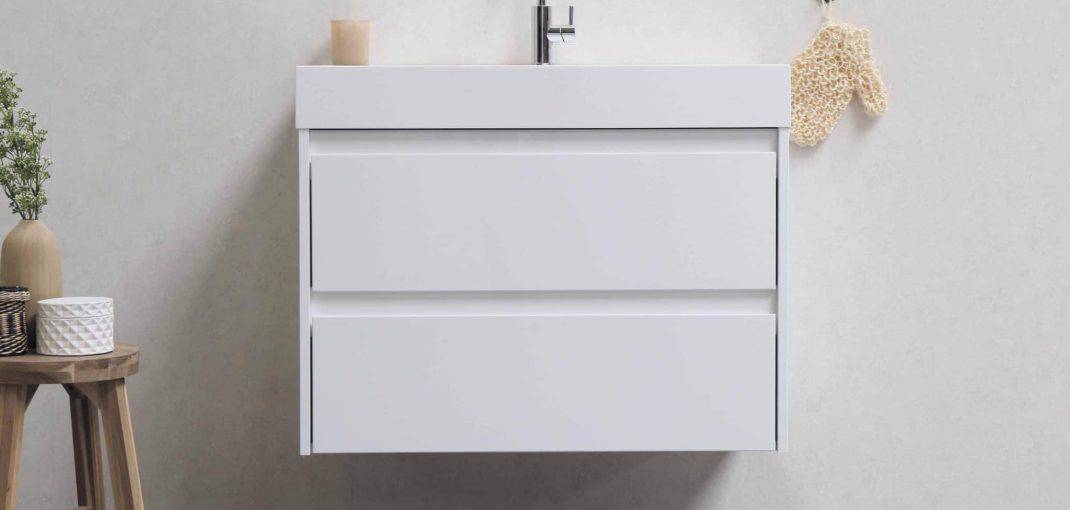The Pros and Cons of Integrated Sinks
Sinks come in all shapes and sizes—but which one is right for your home? Increasingly, people are opting to remodel their kitchens, bathrooms, and other areas with integrated sinks. Integrated sink countertops are valued for their cohesion, symmetry, and seemingly infinite customization. Whether you prefer a simple, refined look, or one that’s built-in with your luxurious quartz countertops, integrated sinks can be the perfect addition.

What Is an Integrated Sink?
Integrated sink countertops are a fusion of the countertop and sink into one cohesive design. Rather than the sink being its own design element, sinks that are integrated with a countertop are made of one material. Materials like quartz, granite, and marble are popular for creating the integrated sink countertop look many homeowners crave.
In some areas of the house, it’s not unusual to have a stand-alone sink, without a countertop. For example, in your bathroom or washroom.
However, in other places, like the kitchen, a countertop of some kind is more than standard. For some people choosing to remodel their kitchens, combining the materials, design, and overall effect of their countertop with their sinks leads them to install an integrated sink built directly into the counter.
Because integrated sinks are essentially basins built right into the countertop, they highlight a sense of cohesion and unity of design that can’t quite be achieved with undermount sinks, drop-in sinks, or farmhouse sinks. Regardless of your reasons for preferring an integrated sink, it’s impossible to deny the impact they can have on the overall aesthetic of your kitchen or bathroom.
[bs_row class=”row”]
[bs_col class=”col-sm-6″]
[bs_col class=”col-sm-6″]
[/bs_row]
What Types of Materials Can You Use with an Integrated Sink?
After you’ve measured the size of your potential new countertop/integrated sink combo, it’s time to start considering the type of material you want to use to build it. In reality, the type of material you use for your integrated sink can be as varied as the types of countertops themselves.
A couple of common types of countertop and integrated sink materials are:
- Quartz countertops – Quartz is often preferred for countertops and integrated sinks alike due to its eye-catching appearance and durable qualities. Quartz is heat and scratch-resistant and looks great in any kitchen or bathroom.
- Granite Countertops – Whereas quartz is an engineered product with a fairly uniform look, granite slabs come directly from the quarry bearing the unique patterns and colors given to them by nature. People who go with granite for an integrated sink and countertop combo often desire the natural look that the stone provides.
- Marble Countertops – In terms of pure luxury, there are few materials that can match marble countertops. The feel, look, and overall appeal of a marble countertop oozes class. While no one would say that quartz and granite countertops are cheap, marble can get costly, and especially so when you decide to have an integrated sink cut into the surface. Also, you’ll need to consider how you will seal the stone. Overall, however, the impression left by marble is second-to-none.
- Laminate Countertops – Laminate countertops provide an affordable luxury option for people renovating their homes on a budget. Although laminate countertops can’t feature truly integrated sinks per se, that doesn’t mean you can’t compliment your laminate countertop with an undermount sink that creates the same impression.
Regardless of the material you opt for, you can create a luxury experience that brings an added flair to your kitchen or bathroom.

Where Can You Add An Integrated Countertop Sink in Your Home?
Speaking of integrating your sink with your countertop, you might be wondering where to include the statement-making design element in your home.
The two main places that people use integrated sinks are in their bathrooms and kitchens to create contemporary interiors. For example, people looking to incorporate a sense of modern utility beyond that of a stand-alone bathroom vanity may opt to include an integrated quartz bathroom sink in their master bathroom or any other full bathroom.
Going with an integrated bathroom sink alongside a quartz countertop lends a polished look to any bathroom. While also assuring that you have ample space to layout your hygiene products and personal decorative pieces.
However, they are used for more than just integrated sink vanity tops—they also make a stunning addition when used as an integrated kitchen sink.

An integral kitchen sink has the ability to pull the entire interior of your kitchen together, and even elevate the utility and aesthetic consideration of your kitchen to the next level. Besides these two mainstays in the home, you could also consider installing an integrated sink into a bar area, laundry area, or anywhere else you could benefit from having a sink.
The Pros and Cons
Now that we know more about the materials and places you can place integrated sink countertops, what are some of the advantages and disadvantages of doing so?
The Pros:
- Pro: Integral Sinks Allow for a Cohesive Look – Because integrated sinks are built directly into the countertop, they provide for a seamless experience that pulls the various elements of your kitchen, bathroom, or other room together.
- Pro: Integrated Sinks Are Infinitely Customizable – Whether you want a deep, straight basin or a rounded, tapered finish, you can make your integrated sink exactly the way you want it.
- Pro: The Lack of Creases Make Integrated Sinks Great for Cleaning – Because the style of sink is always built right into the countertop, they make for easy cleaning and clean-ups. Brush water directly into your sink from the adjacent countertop with the trouble of a lip in the way.

The Cons:
- Con: Integrated Sinks Can Be Expensive – They are often carved directly from the same material of the countertop. This means that they represent a sizable additional expense with some materials, such as marble.
- Con: Integral Countertop Sinks Can Be a Pain to Replace – If you decide you’d like to switch things up in a couple of years, you would have to renovate the entire countertop, as well as replace the sink.
- Con: Integrated Sinks Can Become Scratched – Because of the above, dealing with a gash, chip, or scratch in your sink can be difficult when it’s fully integrated into the surface of the counter.

The Bottom Line
In light of the above, an integrated sink and countertop combo might not be for everyone. However, for the right kitchen or bathroom, there’s nothing that says luxurious quite like the cohesive beauty of an integral sink countertop.
Whether you’re committed to a full reno or are just exploring a possible sink replacement, it’s helpful to have a team of experts on your side. Schedule a consultation with an experienced kitchen remodeler with MKD today to find out if an integrated sink countertop could be the right fit for you. To get started on your project before meeting with a countertop specialist, check out our Countertop Measuring Guide to learn more.
Michigan Kitchen Distributors is Michigan’s premier kitchen remodeling and design company. When it comes to sinks or countertops, we have the right solutions for you. We offer in-home consultations and can help you pick out the right material for you. Call us today!






